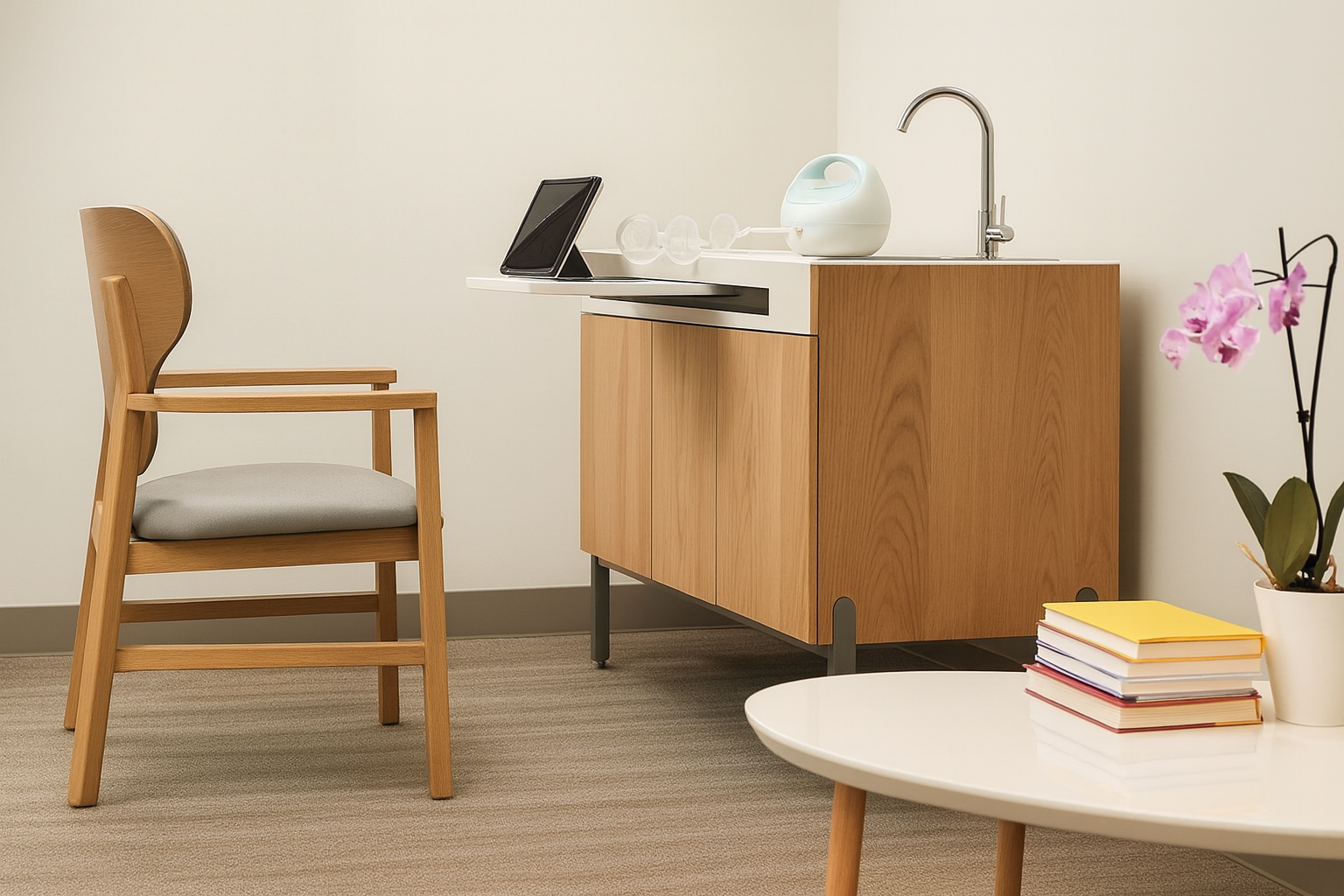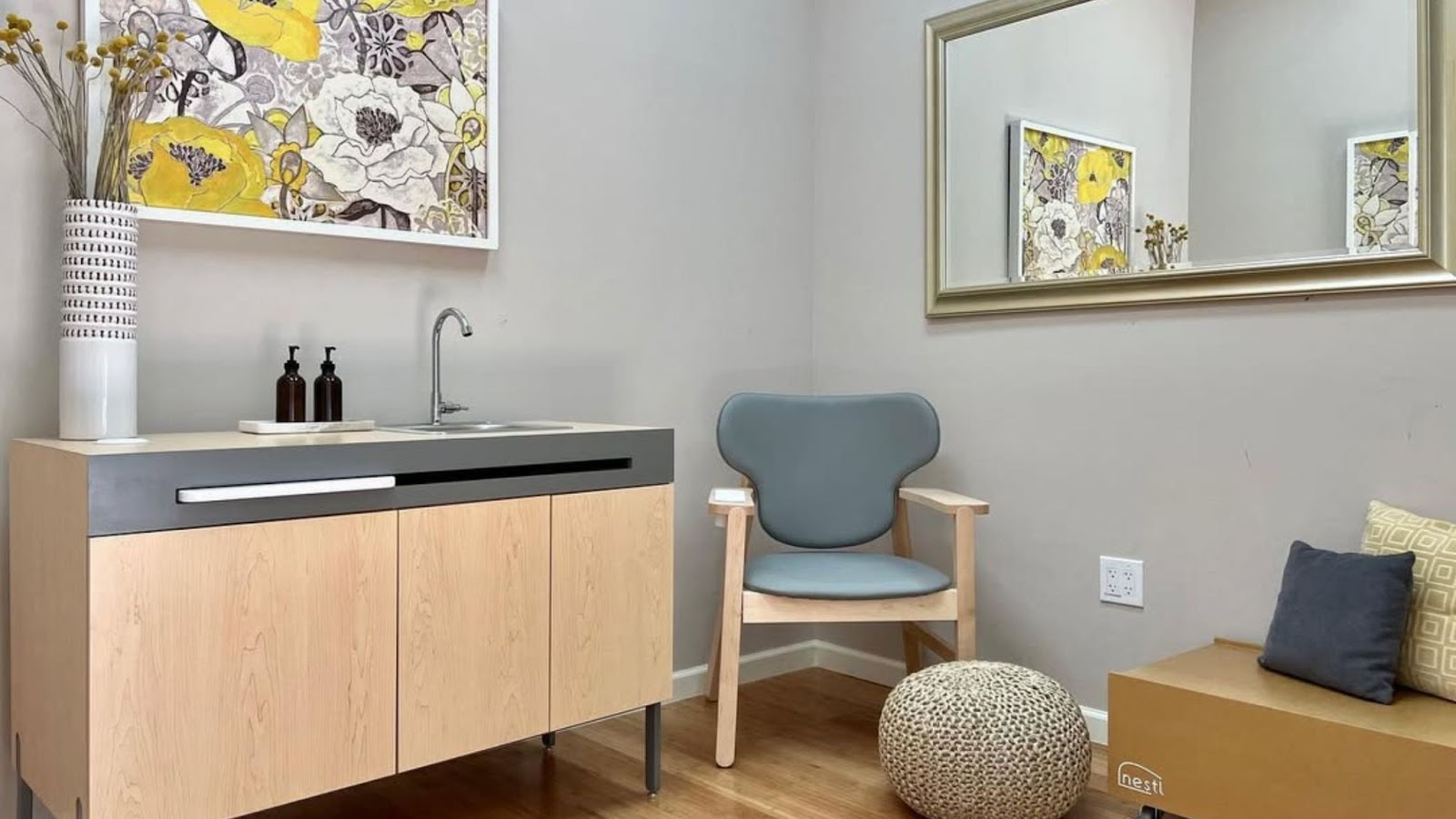When designing a comfortable and functional space for nursing mothers, choosing the right furniture is key. While both lactation chairs and nursing gliders provide seating for breastfeeding or pumping, they are not interchangeable. Understanding the differences between these two options can help you create a space that truly supports nursing mothers in the workplace or at home.
What Is a Lactation Chair?
A lactation chair is specifically designed for use in dedicated lactation spaces, such as workplace nursing rooms, healthcare facilities, or public spaces. These chairs are tailored to meet the unique needs of pumping mothers, ensuring comfort, functionality, and privacy.
Key features of a quality lactation chair include:
- Ergonomic Design: Lactation chairs prioritize lumbar support and armrests positioned at ideal heights for comfortable pumping.
- Easy-to-Clean Materials: Unlike traditional upholstery, lactation chairs are often covered in antimicrobial, wipeable fabrics to maintain hygiene in shared spaces.
- Compact Design: Lactation chairs are typically space-efficient, making them ideal for smaller dedicated nursing rooms.
- Stationary Base: To ensure stability and safety, lactation chairs often have a stationary base rather than a rocking or gliding motion.
What Is a Nursing Glider?
A nursing glider is a popular seating option for breastfeeding mothers at home. These chairs are designed for comfort during longer feeding sessions and often focus on soothing the baby with gentle motion.
Key features of a nursing glider include:
- Gliding or Rocking Motion: The smooth back-and-forth movement is designed to calm both the baby and mother.
- Padded Armrests: Soft cushioning provides comfort during extended nursing sessions.
- Reclining or Ottoman Options: Many nursing gliders offer recline features or come with ottomans to support tired legs.
Why a Lactation Chair Is Better for Workplace Settings
While nursing gliders excel in home environments, lactation chairs are far better suited for professional and public spaces. Here’s why:
- Efficiency: In workplaces, pumping mothers often have limited time during breaks. A stationary lactation chair allows them to be stabilized which helps ensure a successful pumping session.
- Cleanliness: Lactation chairs are built with durable, wipeable fabrics, ensuring easy maintenance in high-traffic rooms.
- Space Optimization: Given that workplace lactation rooms are often smaller, the compact design of lactation chairs is ideal for maximizing space without compromising comfort.
- Flat Surfaces for Support: When arm rests are flat and wide, they can properly hold critical items such a breast pump, water bottles, or work materials.
- Professional Aesthetic: Lactation chairs are designed to blend seamlessly into office environments, offering a sleek and modern look.
Investing in the Right Furniture
Creating a welcoming and functional lactation space is crucial for businesses looking to support working parents. Investing in high-quality lactation chairs ensures mothers have the ergonomic support they need, while also meeting workplace hygiene and safety standards. Companies like Nessel specialize in lactation space furniture that is designed specifically for workplace needs, ensuring comfort without compromising functionality.
While both lactation chairs and nursing gliders serve valuable purposes, understanding their differences is essential for creating the right environment. For professional settings where efficiency, cleanliness, and space optimization are priorities, a well-designed lactation chair is the best choice. By investing in the right furniture, businesses can demonstrate their commitment to supporting nursing mothers and fostering an inclusive workplace
%404x.png)




%404x.png)
